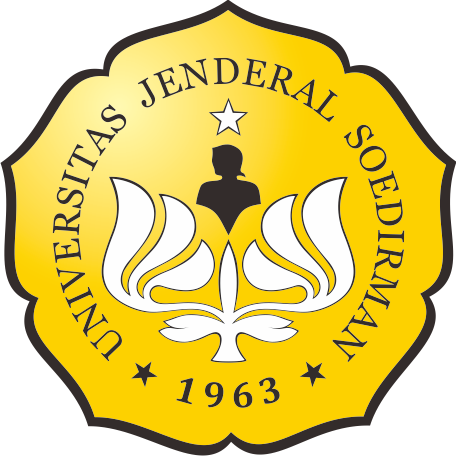NEMATODE COMMUNITY RESPONSE TO VARIED PROPORTION OF DECOMPOSING PLANT LITTER
Abstract
The research objectives were to investigate nematode community response to decomposing plant litter of varying proportions, and to measure the litter decomposition rate. This greenhouse experiments included three treatments of decomposing plant litter with proportions of 30:70, 50:50, and 70:30 (leaf litter to stem-paddy litter, weight to weight), and two controls (commercial organic fertilizers and no-organic matter). We applied the prepared plant litter and organic fertilizers on the surface of the agricultural sandy soil. Soil samples were taken after two, seven, 14, 28, 49, and 77 days to follow nematode temporal changes. Nematodes were assigned to functional groups and family level of a taxon. We used Anova to test the significance of nematode abundance among the treatments, exponential decay model to measure decomposition rates of the plant litter, and canonical correspondence analysis to investigate the correlation of varying plant proportion and nematode community composition. The results showed that nematode functional groups and family did not differ among soils of various plant litter proportions. Bacterivorous Rhabditidae and Cephalobidae, fungivorous Aphelenchidae, and fungivorous-root feeder Tylenchidae inhabited plant litter amended soils. Their abundance, however, differed significantly (p<0.001) and revealed two temporal patterns, i.e., linear (50:50) and unimodal (30:70 and 70:30). No nematodes were observed in organic fertilizer amended soil and no-organic matter soil. Nematode community composition changed over time according to the litter proportion, in which by the end of experiments, community of 50:50 and 30:70 were the least similar (r: 0.57 of axis-1 and 0.54 of axis-2, CPV: 89.06). We concluded that all litter proportions retained similar quality and supported the growth of similar nematode groups. The litter proportion, however, appeared to influence nematode abundance, their temporal patterns, and community compositions.
Keywords
Full Text:
PDFReferences
Bongers T, Bongers M. 1998. Functional diversity of nematodes. Appl. Soil Ecol. 10:239–251. https://doi.org/10.1016/S0929-1393(98)00123-1
Briar SS, Fonte SJ, Park I, Six J, Scow K, Ferris H. 2011. The distribution of nematodes and soil microbial communities across soil aggregate fractions and farm management systems. Soil Biol. Biochem. 43:905–914. https://doi.org/10.1016/j.soilbio.2010.12.017
Briar SS, Grewal PS, Somasekhar N, Stinner D, Miller SA. 2007. Soil nematode community , organic matter , microbial biomass and nitrogen dynamics in field plots transitioning from conventional to organic management. 37:256–266. https://doi.org/10.1016/j.apsoil.2007.08.004
Ferris H, Bongers T. 2006. Nematode indicators of organic enrichment. In: Journal of Nematology. Vol. 38. p. 3–12.
Ferris H, Bongers T, De Goede RGM. 2001. A framework for soil food web diagnostics: Extension of the nematode faunal analysis concept. Appl. Soil Ecol. 18:13–29. https://doi.org/10.1016/S0929-1393(01)00152-4
Ferris H, Bongers T, de Goede RGM. 2004. Nematode faunal analyses to assess food web enrichment and connectance. Nematol. Monogr. Perspect. 2:503–510.
Forge TA, Kimpinski J. 2008. 'Nematodes.' In M.R. Carter & E.G. Gregorich, eds. Soil Sampling and Methods of Analysis. Second ed. CRC Press. pp.415–24.
Forge TA, Tanuta M. 2008. Indicator of soil food web properties. In: M.R. Carter dan E.G. Gregorich (Ed), Soil sampling and methods of analysis. CRC Press, pp.577–88 .
Freckman DW, Baldwin JG. (1990) Nematoda. In: Dindal DL (ed) Soil biology guide. Wiley, New York, pp 155–200
Harmon ME, Nadelhoffer KJ, Blair JM. 1999. 'Measuring Decomposition, Nutrient Turnover, and Stores in Plant Litter.' In Robertson, G.P., Coleman, D.C., Bledsoe, C.S., and Sollins, P. eds. Standard Soil Methods for Long term Ecological Research. Oxford University Press. pp.202–240.
Hodge A, Stewart J, Robinson D, Gri BS, Fitter AH. 2000. Plant N capture and microfaunal dynamics from decomposing grass and earthworm residues in soil. 32:1763–1772. https://doi.org/10.1016/S0038-0717(00)00095-X
Maharning AR, Irianto A. 2012, 'Soil Biota Application to Improve Soil Quality: Habitat Formation, Soil Biota Diversity, and Soil Food–Web.' Report. Faculty of Biology, Universitas Jenderal Soedirman, Purwokerto
Morriien E. 2016. Understanding soil food web dynamics, how close do we get? Soil Biol. Biochem. 102:10–13. https://doi.org/10.1016/j.soilbio.2016.06.022
Murray PJ, Cook R, Currie AF, Dawson LA, Gange AC, Grayston SJ, Treonis AM. 2006. Interactions between fertilizer addition , plants and the soil environment : Implications for soil faunal structure and diversity. 33:199–207. https://doi.org/10.1016/j.apsoil.2005.11.004
Neher D a., Weicht TR, Barbercheck ME. 2012. Linking invertebrate communities to decomposition rate and nitrogen availability in pine forest soils. Appl. Soil Ecol. 54:14–23. https://doi.org/10.1016/j.apsoil.2011.12.001
Nguyen, B., (2009). Rhabditida: Rhabditina Generic Identification. [Online] Available at: "http://nematology.ifas.ufl.edu/ nguyen/ morph/rhabdi/rhabmain.htm"http://nematology. ifas.ufl.edu/ nguyen/morph/rhabdi/rhabmain.htm.
Powers JS, Montgomery RA, Adair EC, Brearley FQ, DeWalt SJ, Castanho CT, Chave J, Deinert E, Ganzhorn JU, Gilbert ME, et al. 2009. Decomposition in tropical forests: a pan–tropical study of the effects of litter type, litter placement and mesofaunal exclusion across a precipitation gradient. J. Ecol. 97:801–811. https://doi.org/10.1111/j.1365-2745.2009.01515.x
Szanser M, Ilieva–Makulec K, Kajak a., Górska E, Kusińska a., Kisiel M, Olejniczak I, Russel S, Sieminiak D, Wojewoda D. 2011. Impact of litter species diversity on decomposition processes and communities of soil organisms. Soil Biol. Biochem. 43:9–19. https://doi.org/10.1016/j.soilbio.2010.08.031
Tarjan AC, Esser RP, Chang SL. 1977. An Illustrated key to nematodes found in Fresh Water. Journal Water Pollution Control Federation 49:2318–2337 accessed 05.05.14. as Interactive Diagnostic Key to Plant Parasitic, Freeliving and Predaceous Nematodes at. http://nematode.unl.edu/ key/ nemakey.htm.
Yeates GW, Bongers T, de Goede RGM, Freckman DW, Georgieva SS. 1993. Feeding habits in soil nematode families and genera–an outline for soil ecologists. Journal of Nematology. 25:315–331
Article Reads
Total: 1349 Abstract: 896 PDF: 453Refbacks
- There are currently no refbacks.

This work is licensed under a Creative Commons Attribution-ShareAlike 4.0 International License.
This website is maintained by:
Bio Publisher
The Faculty of Biology Publishing
Faculty of Biology
Universitas Jenderal Soedirman
Jalan dr. Suparno 63 Grendeng
Purwokerto 53122
Telephone: +62-281-625865
Email: biologi@unsoed.ac.id
T his website uses:
OJS | Open Journal System
A free journal management and publishing system that has been developed by the PKP (Public Knowledge Project) version 2.4.8.0.
All article content metadata are registered to:
Crossref
An official nonprofit Registration Agency of the International Digital Object Identifier (DOI) Foundation.
Articles in this journal are indexed by:









